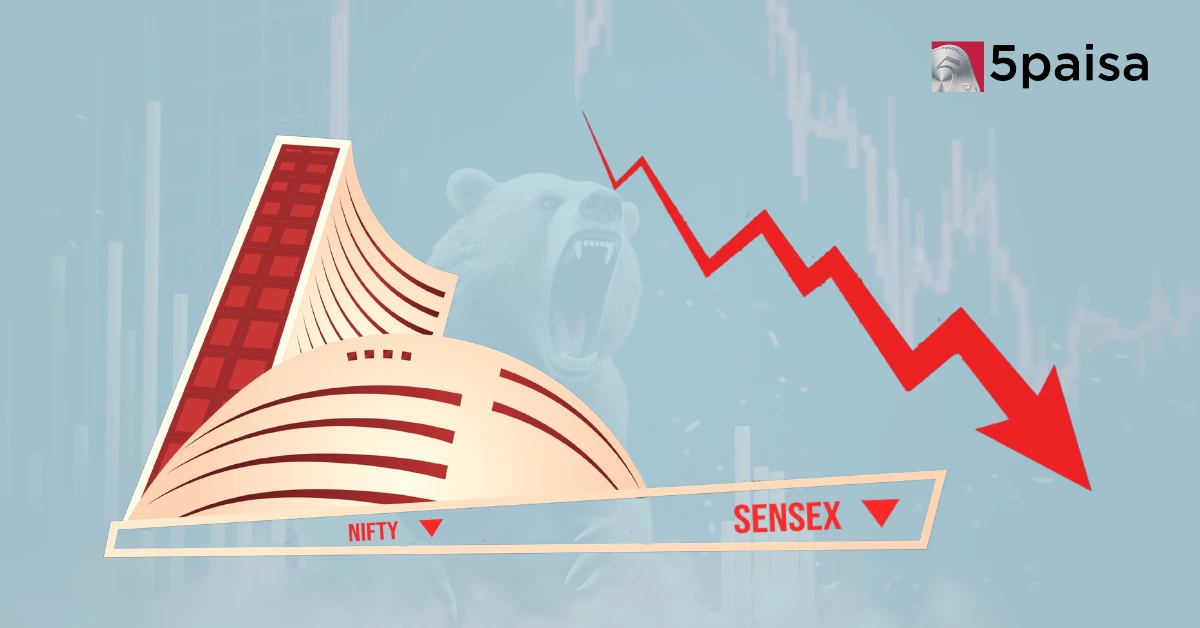iThe current values are delayed, open demat account for live values.
BSE PSU
BSE PSU Performance
-
Open
19,583.02
-
High
19,672.35
-
Low
19,489.17
-
Prev Close
19,470.98
-
Dividend Yeild
2.90%
-
P/E
12.01

BSE PSU Sector Performance
Top Performing
| Sector Name | Percentage Change |
|---|---|
| Diamond, Gems and Jewellery | 0.46 |
| IT - Hardware | 1.16 |
| Leather | 1.46 |
| Ceramic Products | 1.98 |
Under Performing
| Sector Name | Percentage Change |
|---|---|
| Real Estate Investment Trusts | -0.14 |
| Tobacco Products | -1.41 |
| Paints/Varnish | -0.41 |
| Oil Drill/Allied | -0.29 |
Color code for Stocks Performance
- 5% and above
- 5% to 2%
- 2% to 0.5%
- 0.5% to -0.5%
- -0.5% to -2%
- -2% to -5%
- -5% and below
Constituent Companies
| Company | Market Cap | Market Price | Volume | Sector |
|---|---|---|---|---|
| State Bank of India | ₹709418 Cr |
₹794.9
(2%)
|
521874 | Banks |
| Bharat Petroleum Corporation Ltd | ₹137639 Cr |
₹317.25
(3.1%)
|
438375 | Refineries |
| MMTC Ltd | ₹9240 Cr |
₹61.6
(0%)
|
346519 | Trading |
| BEML Ltd | ₹15411 Cr |
₹3700.5
(0.56%)
|
25626 | Aerospace & Defence |
| Rashtriya Chemicals & Fertilizers Ltd | ₹8278 Cr |
₹150.05
(0.83%)
|
179103 | Fertilizers |
BSE PSU
The BSE PSU Index is a thematic index on the Bombay Stock Exchange (BSE) that tracks the performance of public sector undertakings (PSUs) listed in the S&P BSE 500 index. These PSUs cover a range of sectors including finance, oil and gas, power, metals, and more, providing broad exposure to government-controlled companies in India.
The index is calculated using a float-adjusted, market-cap-weighted method and is reconstituted semi-annually in June and December to reflect market changes. Managed by the S&P BSE Index Committee under Asia Index Private Ltd., the BSE PSU Index is a reliable benchmark for tracking the performance of PSUs. It offers a variant, the S&P BSE PSU Total Returns Index (TR), and is available in both INR and USD.
What is the BSE PSU Index?
The BSE PSU Index is a thematic index on the Bombay Stock Exchange (BSE) that tracks the performance of 57 public sector undertakings (PSUs) listed in the S&P BSE 500 index. These PSUs span nine sectors, including Finance, Oil & Gas, Power, Metal, Mining, Capital Goods, Telecom, Transport, Tourism, and Agriculture. The index is calculated using a float-adjusted, market-cap-weighted method in real time and is reconstituted semi-annually in June and December.
Managed by the S&P BSE Index Committee under Asia Index Private Ltd., a joint venture of S&P and BSE, the index is available in both INR and USD, with spot foreign exchange rates sourced from Refinitiv for the USD version. The BSE PSU Index also has a variant in the form of the S&P BSE PSU Total Returns Index (TR).
How is the BSE PSU Index Value Calculated?
The BSE PSU Index value is calculated using the formula:
Index Value = Index Market Value / Divisor
Where the Index Market Value is determined by multiplying the price, number of shares, and IWF (Float Factor). The Divisor is derived by dividing the Market Value by the Index Value.
The index is reconstituted semi-annually in June and December, with the reference dates set as the last trading days of April and October. Changes made to the index become effective on the Monday following the third Friday of June and December. No additions to the index are made between these rebalancing periods, ensuring stability in its composition.
BSE PSU Scrip Selection Criteria
To be included in the BSE PSU Index, securities must meet specific eligibility criteria. The company must be domiciled in India and listed on the Bombay Stock Exchange (BSE). It must also be part of the S&P BSE 500 Index and belong to the PSU (Public Sector Undertaking) sector, as classified by the BSE Sector Classification System.
Furthermore, the company must be owned by the central government, state government, or jointly by both to the extent of at least 51%. Only common stocks are eligible for inclusion, meaning DVRs (Differential Voting Rights) are not permitted in the index.
In the case of companies that have undergone schemes of arrangement, such as spin-offs or capital restructuring, they must have a minimum listing history of one month to qualify for the BSE PSU Index. This ensures that the index accurately represents public sector undertakings while maintaining its stability and relevance within India's stock market. The eligibility criteria help ensure that only well-established, government-backed companies are part of the index, making it a reliable benchmark for the performance of public sector enterprises.
How does BSE PSU work?
The BSE PSU Index tracks the performance of public sector undertakings (PSUs) listed on the Bombay Stock Exchange (BSE). It comprises 57 stocks from the S&P BSE 500 index, covering key sectors like finance, oil and gas, power, and more. The index value is calculated based on a float-adjusted, market-cap-weighted method, reflecting real-time market performance.
Reconstituted semi-annually in June and December, the index includes only companies where the government holds at least 51% ownership. Eligible companies must also belong to the PSU sector and be part of the S&P BSE 500 index. The index is governed by the S&P BSE Index Committee, ensuring that it remains a relevant and accurate representation of the public sector in India.
What are the Benefits of Investing in the BSE PSU?
Investing in the BSE PSU Index offers several benefits. It provides exposure to India's top public sector undertakings (PSUs) across diverse sectors such as finance, oil and gas, power, and more. These companies are typically backed by the government, offering stability and lower risk compared to private enterprises. The index also offers diversification, reducing the risk of investing in individual PSU stocks.
With semi-annual rebalancing, the index remains aligned with market dynamics, ensuring investors are exposed to the most relevant and high-performing PSUs. Additionally, the BSE PSU Index serves as a reliable benchmark for tracking the performance of India’s public sector, making it a valuable tool for both individual investors and fund managers.
What is the History of the BSE PSU?
The BSE PSU Index was introduced by the Bombay Stock Exchange (BSE) to track the performance of public sector undertakings (PSUs) in India. These PSUs, where the government holds at least a 51% stake, span various sectors such as finance, oil and gas, power, and metals. The index draws its constituents from the S&P BSE 500 index and is calculated using a float-adjusted, market-cap-weighted method.
Reconstituted semi-annually in June and December, the BSE PSU Index has become a key benchmark for tracking the performance of India's government-backed enterprises. Managed by the S&P BSE Index Committee, it reflects the evolving dynamics of the public sector, offering investors a reliable tool for measuring PSU performance and facilitating diversified investments in government-controlled companies.
Other Indices
| Indices Name | Price | Price Change (% change) |
|---|---|---|
| India VIX | 17.355 | 0.81 (4.86%) |
| Nifty 10 Yr Benchmark G-Sec | 2594.56 | 0.84 (0.03%) |
| Nifty 10 Yr Benchmark G-Sec (Clean Price) | 920.98 | -0.18 (-0.02%) |
| Nifty 100 | 25551.5 | -41.6 (-0.16%) |
| Nifty 100 Alpha 30 Index | 17872.45 | 38.4 (0.22%) |
Faqs
How To Invest in BSE PSU Stocks?
To invest in BSE PSU stocks, you can buy individual stocks listed in the index through a Demat account. Alternatively, you can invest in ETFs or index funds that track the BSE PSU Index, offering a diversified and cost-effective way to gain exposure to top large-cap companies.
What are BSE PSU stocks?
BSE PSU stocks are public sector undertakings (PSUs) listed on the Bombay Stock Exchange (BSE) where the government holds at least 51% ownership. These stocks represent key sectors like finance, oil and gas, power, and metals, providing exposure to India's major government-backed enterprises.
Can you trade shares on BSE PSU?
Yes, you can trade shares of companies listed in the BSE PSU Index through a Demat account. You can buy and sell these stocks during market hours like any other listed stock. Additionally, you can invest in ETFs or index funds based on the BSE PSU Index for broader exposure.
In which year was the BSE PSU Index launched?
The BSE PSU Index was launched in 2001 by the Bombay Stock Exchange (BSE) to track the performance of public sector undertakings in India.
Can we buy BSE PSU and sell it tomorrow?
Yes, you can buy BSE PSU stocks and sell them the next day, following the BTST (Buy Today, Sell Tomorrow) strategy. This allows you to take advantage of short-term price movements without waiting for the usual settlement period.
Latest News

- May 19, 2025
The Indian stock market is back in the spotlight, and in a big way. By May 16, foreign portfolio investors (FPIs) had pumped a massive ₹18,620 crore into Indian equities, marking a sharp turnaround after months of pulling back. It’s a strong sign that global investors are again confident about India’s economic outlook.

- May 19, 2025
The Life Insurance Corporation of India (LIC), India's biggest institutional investor, has bounced back strongly. Since the market's low point in April, LIC's equity portfolio has surged by nearly ₹1.8 trillion. That's a massive recovery, and it shows just how effective LIC's diverse investment strategy has been, especially in a market that's making a strong comeback.
Latest Blogs
Stock Market Outlook for May 20: Potential Mild Recovery on Cards: Gift Nifty is trading with a slight uptick of 0.12%, indicating a potentially stable to mildly positive start for Indian markets after Monday’s decline. Global Sentiment Remains Weak: European markets closed broadly lower, and U.S.
- May 19, 2025

Investing for the next decade requires a careful selection of companies with strong fundamentals, consistent growth, and a clear long-term vision. India’s growing economy, rising consumer base, and digital transformation offer excellent opportunities for patient investors.
- May 19, 2025

